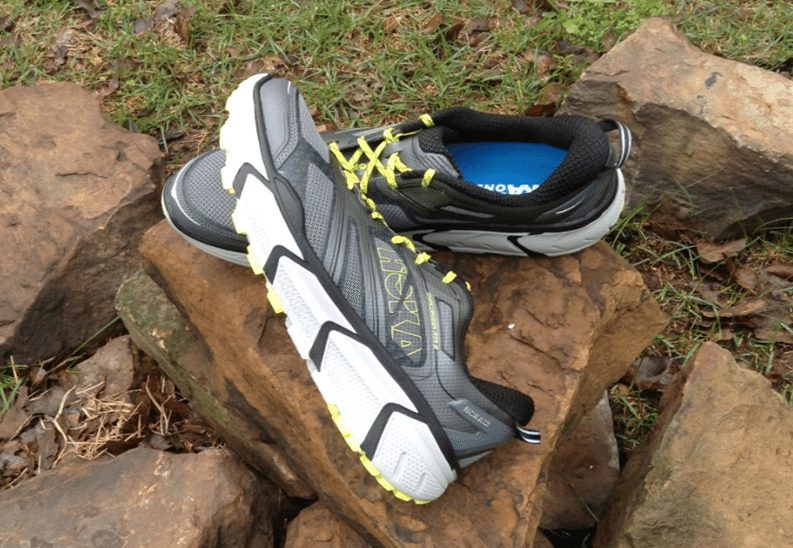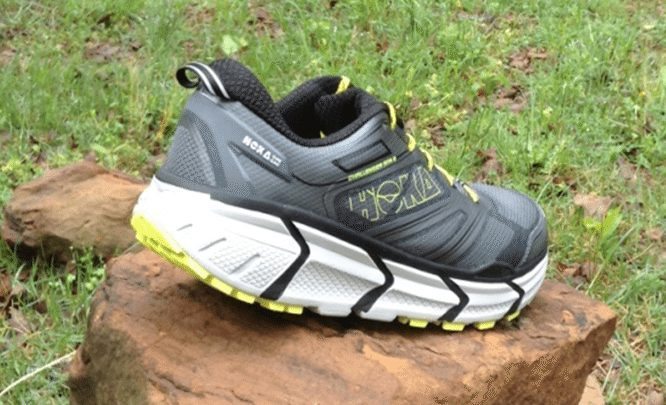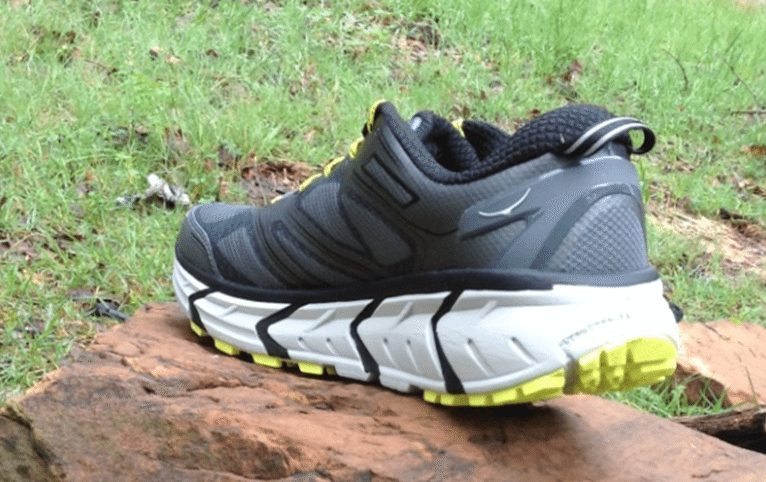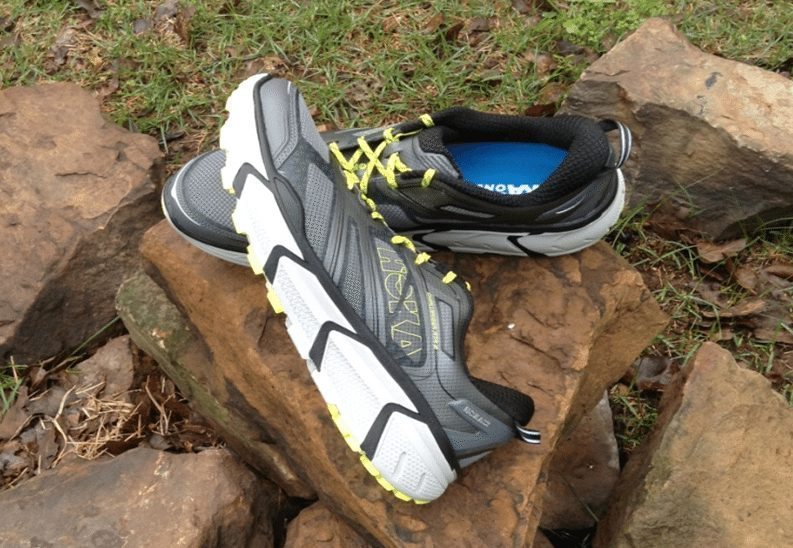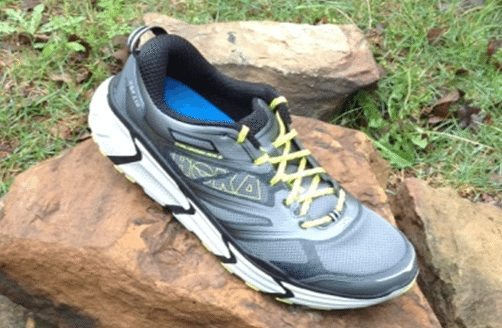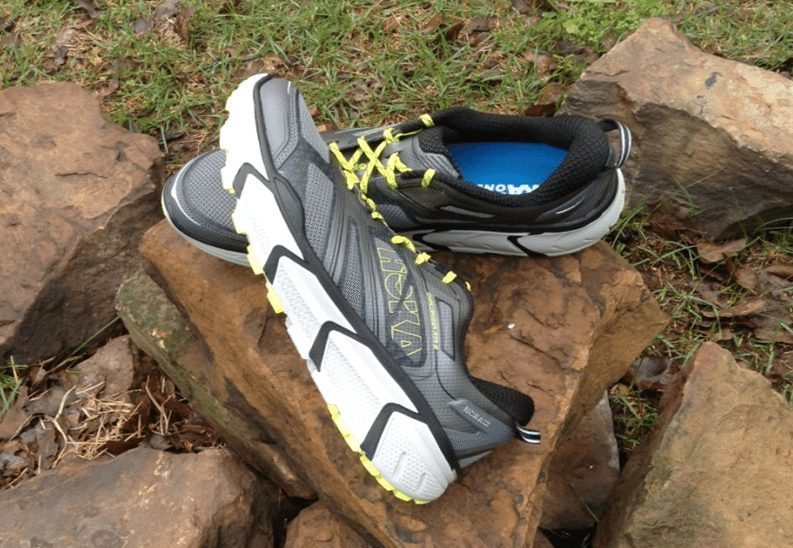
Also, despite looking like a skyscraper it has a minimal drop from heel to toe. I assume they achieved all this by utilizing some kind of unicorn magic. These shoes seem to be one contradiction after another: they look painfully heavy, yet they are shockingly light; they seem unbearably awkward and uncomfortable, but in reality they are extraordinarily cushioned, and promote smooth execution. To be honest, my initial thoughts of this shoe were a combination of confusion and skepticism.
So why did I test a pair? Well because of my beautifully unbiased and professional opinion of course. Also, as an avid trail runner, I was eager to see Hoka’s take on a, pseudo, trail shoe. So, thanks to my brothers at Spotter Up, a pair of Hoka Challenger ATR’s found themselves on my doorstep.
The specifications of the shoe that I tested are as follows:
Make/Model:Hoka Challenger ATR
Size: Men’s US 12.5
Color: Grey/Citrus
Weight: 11.4oz (advertized via Hoka’s website: 9.5oz per us size 9)
Geometry: Heel: 29mm; Forefoot: 24mm = 5mm drop
Out of the box, my emotions were mixed. Although historically Hoka’s distinctive look is usually off-putting, I found the Challenger’s to be one of the best looking Hoka’s I have ever seen (as detailed in my awesomely inspired pictures).
Despite my angst, however, I maintained my anti-conformist skepticism. As I continued to look over the shoe, I found the seamless mid-foot support interesting. I was curious to see how this seamless design would hold up over time. As with any trail shoe, toe protection is important. I surveyed the tip of the shoe and found marginal toe protection, nothing to shout about but likely adequate for light trail running.
The lacing system was traditional, also nothing exciting here. I found the tongue padding to be lacking, but the heel cup made up for it I suppose. The tread pattern looked acceptable for light trail running, nothing too aggressive. There weren’t any huge gaps for rocks to get lodged, which is a huge plus and one that, somehow, is often ignored. Although, there might be a few pockets for mud to get packed in.
Overall, I was pleasantly surprised. The only real negative attribute I found was a weight discrepancy between the two shoes I tested. The left shoe was nearly half an ounce heavier than the right shoe (11.4oz/11oz respectively). I threw them on for my first run, which was exceptionally short compared to my usual training cadence. These shoes came to me right smack in the middle of a training cycle that was preparing me for a 36 mile open water swim, so my runs have taken a back seat during my cardio endeavors. Therefore, I didn’t put nearly as many miles as I’d hoped to.
I wanted to run these shoes into the ground before the review, but I suppose that leaves room for a sequel : Hoka Challenger: part-deux. During the short run I had anticipated agony/disdain but I was unable to find any. I continued to run, hoping to dispel all the Hoka fanatics, but I failed.
Although I didn’t find anything truly exceptional, I couldn’t find anything too negative either. The ride was exceptionally cushioned and smooth, something I am growing un-accustomed to with my natural running endeavors. I did feel as if I was working a little hard to maintain easy paces, but as I sped up, the effort remained the same. What I found was that it is just as well to run a solid pace than take it easy in these shoes, which again would lend to be more positive than negative in my opinion.
From what I gathered from Hoka’s website they are aiming for consistency. I will have to give them credit; they certainly achieved consistency with this shoe. I found my foot strike consistently mid foot, which surprised me given the design of the shoe and its appeal to heel strikers. Again, overall I was pleasantly surprised. On the trail, the shoe handled light terrain well. I will say that in rainy/ slick conditions the shoes failed slightly in the grip department. With my foot striking square in the mid foot, my initial impact was less on the 4mm lugs and more on the EVA which makes for a slick step in certain conditions. However, run after run, these shoes prevailed consistently.
I would not hesitate to grab these shoes for an exceptionally long, or short, run on pavement or light trail. Although they lack superficial appeal, their design and technology are as intriguing as they are functional.
Typically I avoid heal striking friendly shoes, but I did not find this to inhibit my form or the function of the shoe. I did find that when I was walking or standing for extended periods, these shoes really stood out. I cannot say they are my favorite shoe, but they certainly are a contender in the consistent/reliable department. The wear patterns were minimal, and the shoes basically looked like they did when I took them out of the box, plus a couple hundred miles.
I do think there is quite a market for these shoes. Most notably, I would say heal strikers will benefit the most from them. However, I wouldn’t necessarily limit these shoes to running capacities. Occupations requiring long hours on the feet or one’s requiring exuberant walking, would also hugely benefit from the excellent cushion and consistency these shoes provide.
At the end of the day these shoes measure up, for me, like this:
Functionality: 5/5
Weight: 3/5 (although light, I had to ding them due to the weight discrepancy between right and left shoes)
Durability: 5/5
Cost: 4/5
Comfort: 5/5
Total 22/25
All in a all, this is a solid running platform, and I would absolutely recommend buying a pair.
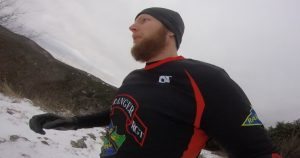
Athletic Background
– Most notably I am an accomplished swimmer, my childhood career lasted 13 years
– I was able to snatch a State championship title and have held multiple federation (AAU)records
– As an adult I am currently the 4th ranked 25-29 year old according to USAT’s aquathlon ranking system
It is a short list, but I eagerly await the opportunity to prove my self as a competitive triathlete.
